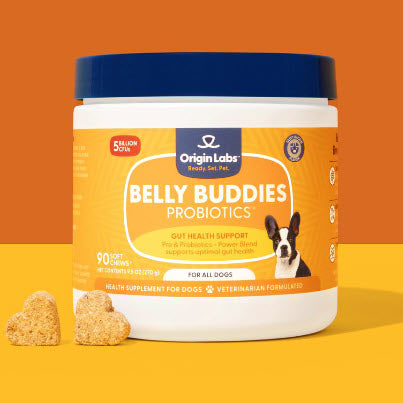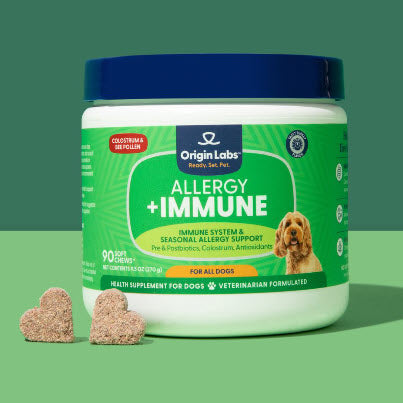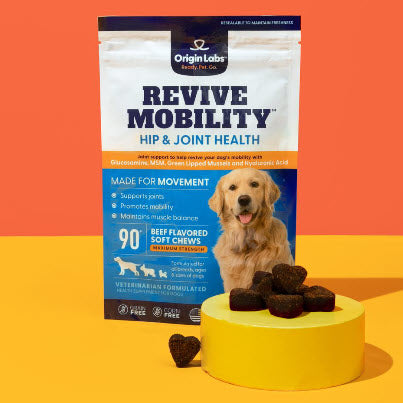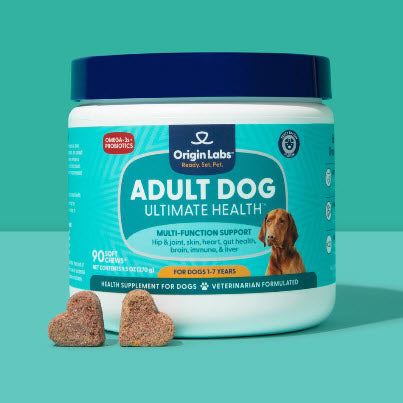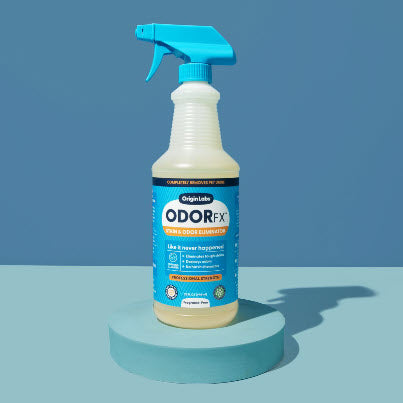Introduction
Mange in dogs is a skin condition caused by parasitic mites, leading to distressing symptoms like itching, scabs, hair loss, and sensitive sores. Detecting and treating mange in dogs at home early is essential for the well-being of the affected canine and to prevent the spread, as some forms are highly contagious. There are primarily two types of mange:
- Demodectic Mange: Often considered less severe, this type occurs when the immune system cannot keep demodex mites in check, which are normally present in small numbers on a dog’s skin.
- Sarcoptic Mange: Also known as scabies, this type is caused by Sarcoptes scabiei mites and can quickly spread between animals and even humans.
This article serves as a comprehensive guide on how to leverage home remedies and other treatment options to tackle mange effectively. By enhancing the immune system and following a strategic approach to care, you can manage your dog's symptoms at home. The forthcoming sections will detail various remedies, key precautions, and when professional veterinary assistance becomes necessary.
Understanding Mange in Dogs
Mange is a common skin condition in dogs, caused by parasitic mites. These tiny creatures burrow into the skin layer, leading to severe irritation and discomfort. It's essential to understand that there are two primary types of mange, each caused by a different kind of mite: demodectic mange and sarcoptic mange.
Demodectic Mange, also known as red mange or puppy mange, is typically harmless and often occurs in puppies due to their immature immune systems. The causative agent is a mite named Demodex Canis which lives in the hair follicles of dogs. Most dogs have a small number of these mites on their skin without showing any signs. However, if a dog's immune system is compromised, the mites can multiply uncontrollably, resulting in demodectic mange. Symptoms include:
- Hair loss (alopecia)
- Redness
- Scaling
- Sometimes secondary bacterial infections
On the other hand, Sarcoptic Mange, also known as scabies or canine scabies, is highly contagious and potentially dangerous. The culprit here is a mite called Sarcoptes Scabiei that burrows deep into the skin causing intense itching and discomfort. Symptoms include:
- Severe itching (pruritus)
- Redness
- Hair loss
- Crusty skin lesions that can appear all over the body
Before initiating any treatment regimen for your furry friend at home, it's crucial to seek correct diagnosis from a veterinarian. This step is vital as symptoms of mange may mimic other skin conditions such as allergies or fungal infections. A veterinarian can perform a skin scrape test or use other diagnostic tools to identify the type of mange affecting your pet.
Remember that an accurate diagnosis sets the foundation for effective treatment. By understanding what type of mange your dog has contracted – demodectic or sarcoptic – you can tailor the treatment appropriately and help your pet regain their health and happiness.
1. Home Remedies for Treating Mange in Dogs
Treating mange in dogs at home involves a variety of approaches that support healing and comfort. While veterinary guidance is paramount, certain home remedies can complement medical treatments. Here are some topical and internal methods to help cure mange in dogs naturally.
Other Topical Remedies
Beyond conventional medicine, there are topical solutions that may alleviate the symptoms of mange. These remedies should be used with care, as each dog's skin can react differently.
- Honey Application: Honey is known for its antimicrobial properties. Applying a thin layer of raw honey to affected areas can soothe the skin and provide relief from itching. However, its stickiness can attract dirt, so it should be used in a controlled environment and washed off after several hours.
- Olive Oil Application: Olive oil can help soothe skin irritation caused by mange. It can also suffocate mites when applied to affected areas of your dog’s skin. A light coating of olive oil, left on for a few hours before rinsing, might reduce discomfort.
- Hydrogen Peroxide and Borax Sponge Baths: A diluted solution of hydrogen peroxide with Borax acts as a disinfectant and can kill mites on the surface of the skin. Mix 1 cup of hydrogen peroxide with 2 cups of water and add 3 tablespoons of Borax; apply to your dog’s fur sparingly to avoid ingestion.
- Anti-parasitic Herbs: Certain herbs like neem and tea tree oil possess anti-parasitic properties which can be beneficial when diluted properly. Use these herbal solutions as directed since high concentrations can be toxic to dogs.
Lemon Rinse
Lemon for mange in dogs is a popular remedy due to its natural antiseptic properties and ability to repel parasites.
How to Prepare Lemon Rinse:
- Slice a whole lemon thinly, including the peel.
- Boil a pot of water and add the lemon slices.
- Let the mixture steep overnight.
- Apply the cooled solution to your dog's coat using a sponge or spray bottle.
- Focus on affected areas but avoid eye contact.
This rinse should not replace prescribed medications but may serve as an adjunctive treatment.
Internal Remedies and Dietary Adjustments
Improving your dog's diet during recovery is crucial because it strengthens the immune system, enabling it to fight off mite infestations more effectively.
- Yogurt Consumption: Feeding your dog plain yogurt with live cultures can aid in gut health, enhancing overall immunity.
- Aloe Vera Gel Application: Though typically used topically for its soothing effect on burns and irritations, oral consumption of pure aloe vera gel (free from aloin) may offer internal healing benefits for skin conditions like mange.
Ensure any dietary additions are safe for dogs; many human foods can be toxic to canine companions.
Supplements for Mange Treatment
Nutritional supplements play an important role in boosting your dog’s defense against mites by promoting healthy skin and fur.
- Feeding High-Quality Dog Food: Choose dog food with well-balanced nutrients that cater specifically to skin health.
- Integrating Immune-Supporting Components: The Are you looking for a product that can support your allergy and immune health? We have just the solution for you. health supplement from Origin Labs contains Omega-3 fatty acids, known for their capacity to reduce inflammation, which can help relieve mange-associated symptoms.
- Avoiding Allergens and Potential Triggers: Keep an eye on ingredients that may cause allergic reactions in dogs such as certain proteins, grains, or additives – allergies weaken the immune system making it harder to combat mite infestations.
Before introducing new foods or supplements into your dog’s diet, consult with a veterinarian to ensure compatibility with your pet's health needs.
These home-based strategies aim at providing relief while fostering an environment conducive to healing from mange. Yet they are not replacements for professional medical advice or treatments prescribed by veterinarians.
Internal Remedies and Dietary Adjustments
Mange in dogs can be managed not only through topical treatments but also with the help of internal remedies and dietary adjustments. These strategies focus on enhancing the dog's immune system, providing relief from symptoms, and creating an inhospitable environment for mites.
Yogurt Consumption (Boosting Immune System)
Including yogurt in your dog's diet can be beneficial. With its probiotic properties, yogurt helps boost the immune system which is crucial for fighting off mites that cause mange. A spoonful of plain, unsweetened yogurt can be added to your dog's food daily. It's essential to note that some dogs might have dairy intolerance. In such cases, discontinue yogurt and consider other dietary adjustments.
Aloe Vera Gel Application
Aloe vera is known for its soothing properties. The application of aloe vera gel can provide relief from itching and promote healing of sores caused by mange. Extract fresh aloe vera gel from the leaf and apply it directly to the affected areas on the skin. Repeat this process daily until you notice improvement.
In addition to these remedies, other dietary adjustments can also contribute to mange treatment:
- Apple Cider Vinegar Solution: Though an external remedy, apple cider vinegar can also be included in your dog’s diet. Dilute it in water (one tablespoon per 50 pounds of body weight) and add it to your dog's food or water. This ingestion can create an acidic environment that is unfavorable for mites.
- Hydrogen Peroxide and Borax Bath: Create a soothing bath using a mixture of hydrogen peroxide and borax. This not only alleviates symptoms but also aids in killing mites.
- Neem Oil Spray or Shampoo: Neem oil has anti-parasitic properties that can help kill mites and relieve itching caused by mange. Use a neem oil spray or shampoo during your dog's bath time for effective relief.
- Honey and Olive Oil: Both honey and olive oil can be used externally for their antiseptic and soothing properties. However, they can also be included in your dog's diet to boost overall health and immunity.
Cautionary note: While home remedies can help alleviate mild cases of mange, it's important to consult a veterinarian for severe or persistent infections.
Supplements for Mange Treatment
Equally crucial to the home treatment of mange in dogs is the role of dietary supplements. Just as a healthy diet bolsters human immunity, feeding your dog high-quality food can significantly aid in their recovery from mange.
High-Quality Dog Food
Investing in high-quality dog food ensures that your canine friend receives all the necessary nutrients for a robust immune system. Grain-free options often contain more proteins and fewer fillers, providing the vitamins and minerals essential for skin health.
Immune-Boosting Ingredients
Certain ingredients, when added to your dog's diet, can enhance their ability to fight off mites causing mange. Among these are:
- Omega-3 fatty acids: Found in fish oil and flaxseed oil, omega-3 fatty acids help reduce inflammation and promote skin health.
- Vitamin E: This vitamin aids in skin healing and reduces itching.
- Probiotics: Probiotics are a great way to support the health of your dog. One recommended solution is Belly Buddies Probiotics for Dogs are a must-have for your furry friend's digestive health. from Origin Labs. These beneficial bacteria aid in the balancing of gut flora and support the immune system.
Besides these, lemon, known for its natural antimicrobial properties, can be included in the diet. A lemon rinse can also serve as a topical treatment for affected areas.
Avoid Allergens and Potential Triggers
Allergens in your dog's diet or environment can exacerbate mange symptoms. Hence, it's critical to identify and avoid such triggers during treatment. For instance, some dogs may react adversely to dairy products or certain types of protein. If you notice any such reactions, eliminating these from your dog's diet could help speed up recovery.
It's worth noting that while home remedies such as applying diluted apple cider vinegar or a mixture of hydrogen peroxide and borax provide relief, they should be used responsibly. The same applies to natural mite killers like neem oil spray or shampoo.
Honey, another beneficial ingredient, can be applied directly on the affected areas to soothe the skin and reduce itching. Olive oil also serves a similar purpose, providing much-needed relief to your mangy dog.
Cautionary Note While home remedies can be effective in mild cases, persistent or severe infections should not be taken lightly. Always consult a veterinarian before starting any new treatment regimen for your pet.
2. Over-the-Counter Treatments for Mange in Dogs
If you're looking for over-the-counter treatments for mange, there are several anti-parasitic medications available. These products are designed to fight mite infestations and can help relieve the severe itching and discomfort that dogs with mange experience.
Effectiveness and Safety
Here are some common over-the-counter treatments for mange in dogs and how they work:
- Topical Applications: Shampoos, dips, and spot-on treatments containing ingredients like permethrin or amitraz can kill mites on contact. It's important to use them correctly to avoid skin irritation or toxicity.
- Oral Medications: Pills or chewables such as ivermectin may be available over the counter in certain places. These can be effective but need to be given in the right dose, especially for breeds that are sensitive to ivermectin.
- Environmental Sprays: Controlling the infestation doesn't stop with treating your pet; sprays designed to treat the environment can help prevent mites from coming back.
While these treatments can be powerful, it's crucial to understand that they also come with risks if not used properly. There can be negative reactions, especially if a dog already has health issues or if the products are used incorrectly.
Why You Should Consult a Veterinarian
Before trying any over-the-counter treatments, it's highly recommended to talk to a veterinarian first. A professional can:
- Confirm the type of mange your dog has
- Advise on the most suitable and safe treatment plan
This step is important because it ensures that the underlying cause of the symptoms is accurately identified and addressed without unintentionally harming your dog.
Popular Medications for Mange Treatment
Here are some commonly used medications known for their effectiveness against mange:
- Benzoyl Peroxide Shampoo: This shampoo helps prepare the skin for topical medication by flushing out hair follicles.
- Lime Sulfur Dip: A traditional remedy that has been found effective against both sarcoptic and demodectic mange.
- Selamectin: A spot-on product that provides protection against various parasites, including mites, for a whole month.
Each medication has its own instructions on how often and how long to use it, so make sure to follow the label carefully. Also, remember to take precautions to protect other pets and family members during treatment because certain types of mange can be contagious.
Taking Charge of Your Dog's Mange Recovery
By choosing the right over-the-counter options and using them cautiously with guidance from a veterinarian, you can actively participate in helping your dog recover from mange.
3. The Role of Hygiene in Managing Mange
Hygiene is crucial for managing mange in dogs. It's not just about treating the affected animal, but also about cleaning their surroundings to prevent the mites from coming back.
House Fumigation
Mites, the tiny creatures that cause mange, can be found not only on your dog's skin but also in their living environment. House fumigation helps get rid of these mites and stops them from causing more harm.
Fumigation works by using a special pesticide fog or smoke to kill pests in a specific area. For safe and effective fumigation, it's best to hire professionals who have the right knowledge and equipment. Remember that certain pesticides can be dangerous to pets and humans if not used correctly.
Bedding Laundering
Another important part of managing mange at home is regularly cleaning and washing your dog's bedding. Mites can easily hide and multiply in these areas, becoming a constant source of re-infestation.
Here are some tips for washing your dog's bedding:
- Use appropriate products for washing and disinfecting, such as Borax or apple cider vinegar.
- Soak the bedding in a solution of Borax and hot water for 30 minutes.
- Rinse thoroughly and let it air dry completely before giving it back to your dog.
Note: Borax is a natural laundry booster that also works as an insecticide against mites. Apple cider vinegar has antimicrobial properties that can help with cleaning.
To maintain cleanliness during mange treatment, here are some additional steps you can take:
- Regularly clean areas where your dog spends time, like carpets, rugs, and sofas.
- Use a vacuum cleaner to remove mite eggs from these surfaces.
- Dispose of the vacuum bag immediately to prevent mites from escaping.
By following these hygiene practices, you're not only treating your dog's mange but also reducing the chances of the mites coming back. The next section will discuss important precautions and when to seek veterinary help during your dog's mange treatment at home.
4. Precautions and When to Seek Veterinary Assistance
Mange in dogs is a serious condition that shouldn't be ignored. One of the main types, called sarcoptic mange, is a disease that can be passed from animals to humans. This means it not only puts other pets at risk, but also the people in your family.
In humans, symptoms of sarcoptic mange include a bumpy rash, itching, and redness, especially on the arms, chest, and abdomen. It's important to know that while home remedies can help with dog symptoms, they may not completely get rid of the risk of humans getting infected.
Why You Should Consult a Vet
It's crucial to seek guidance from a veterinarian for two main reasons:
- To get an accurate diagnosis: Mange can have similar symptoms to other skin conditions in dogs. A vet will be able to properly identify the issue through a physical examination or additional tests if needed.
- To choose the right treatment options: Different types of mange require specific treatments. A vet will recommend the most effective course of action based on your dog's condition.
While this article provides detailed information on managing mange at home, it's important to note that it is not a substitute for professional medical advice.
Precautions to Take When Treating Mange at Home
When you're dealing with mange at home, there are certain precautions you should follow to prevent it from spreading or getting worse:
- Isolate your infected dog from other pets: This will help avoid any contact that could lead to cross-contamination.
- Wear gloves when applying topical treatments: This protects your skin from direct exposure to the medication and reduces the risk of transferring mites.
- Wash your hands thoroughly after any contact with your pet: Use soap and warm water for at least 20 seconds to remove any potential mites.
- Regularly disinfect your pet's environment: This includes washing their bedding, cleaning their toys, and sanitizing grooming tools.
The Importance of Vet Check-Ups and Preventative Measures
Regular visits to the vet are crucial throughout the mange treatment process:
- These appointments allow the vet to monitor your dog's progress and make any necessary adjustments to the treatment plan.
- They also help ensure that any secondary infections or complications are promptly addressed.
In addition to proper medical care, there are two key ways you can prevent mange from recurring or spreading:
- Maintain your dog's overall health through balanced nutrition and regular grooming: A strong immune system and clean skin can help prevent mite infestations.
- Use preventive treatments recommended by your vet: These may include monthly spot-on medications or oral tablets that target parasites like mites.
Remember, early detection and prompt treatment guided by a veterinarian greatly increase the chances of a full recovery from mange. Your pet's health depends on your attentiveness and dedication to their well-being.
Conclusion
This complete guide has given you the knowledge and steps to effectively treat mange at home, bringing relief to your furry friend. By knowing the different types of mange and their symptoms, using home remedies, being cautious with over-the-counter treatments, and maintaining good hygiene habits, you can handle this condition from home.
It's important to also take preventive measures to ensure your dog stays healthy and happy:
- Regular grooming: Keeping your dog well-groomed helps identify skin issues early.
- Healthy diet: A balanced diet strengthens your dog's immune system.
- Clean environment: Regularly clean your home and your pet’s living area to prevent mite infestation.
- Routine vet check-ups: These can detect any recurrence of mange or other health problems early on.
By staying aware of your dog's health and acting promptly at any signs of mange, you not only ease their current discomfort but also protect them from future infestations. Remember, a healthy pet is a happy pet, and your efforts in managing and preventing mange make a big difference to their overall well-being.
FAQs (Frequently Asked Questions)
What is the purpose of this article?
The purpose of this article is to provide a step-by-step guide on how to treat mange in dogs at home, including information on home remedies, treatment options, and the importance of early detection and treatment.
What are the different types of mange in dogs?
The different types of mange in dogs are demodectic mange (harmless) and sarcoptic mange (highly contagious).
What are some home remedies for treating mange in dogs?
Some home remedies for treating mange in dogs include using a diluted apple cider vinegar solution, creating a soothing bath with hydrogen peroxide and borax, using neem oil spray or shampoo, and incorporating immune-boosting ingredients such as yogurt and aloe vera.
Are there any supplements recommended for mange treatment?
Yes, supplements such as omega-3 fatty acids can be beneficial for mange treatment. Additionally, incorporating high-quality dog food and avoiding allergens are also important dietary adjustments.
What over-the-counter treatments are available for mange in dogs?
There are various anti-parasitic medications available over-the-counter for mange treatment. However, it is recommended to consult a veterinarian before using any of these products.
How can hygiene play a role in managing mange?
Hygiene can play a role in managing mange by fumigating the house to eliminate mites from the environment and cleaning/laundering bedding with appropriate products such as Borax and apple cider vinegar.
What precautions should be taken when treating mange at home?
It's important to seek veterinary guidance for accurate diagnosis and appropriate treatment options. Additionally, precautions should be taken to prevent further spread or complications during mange treatment at home.



